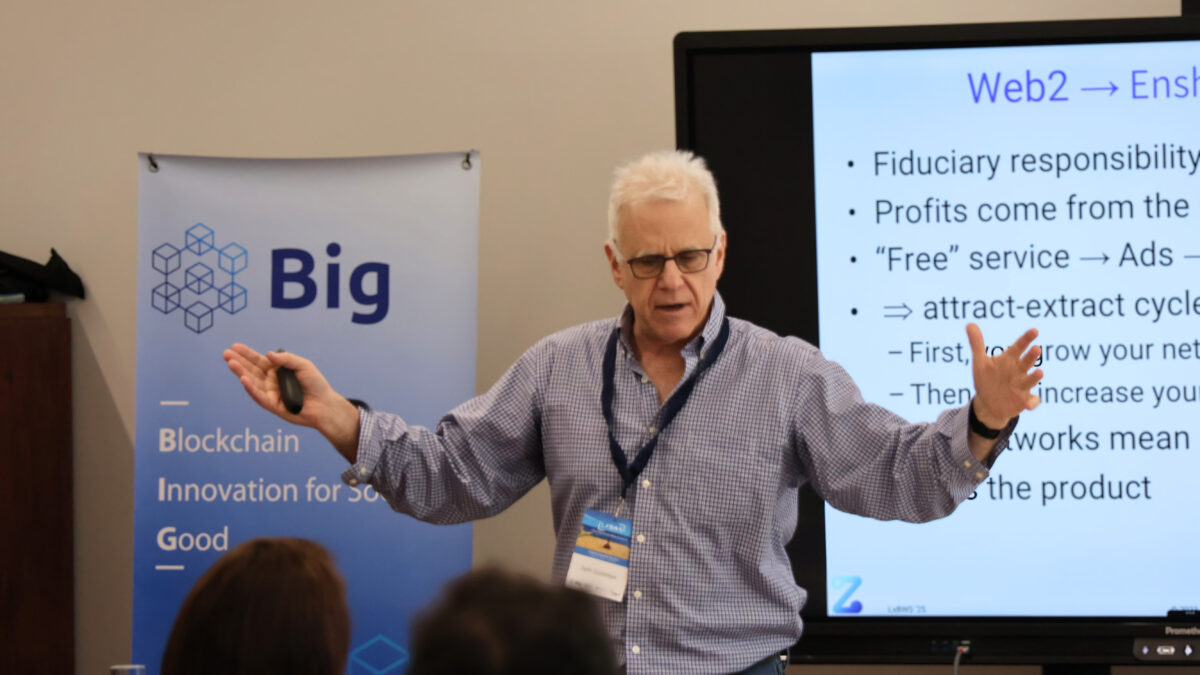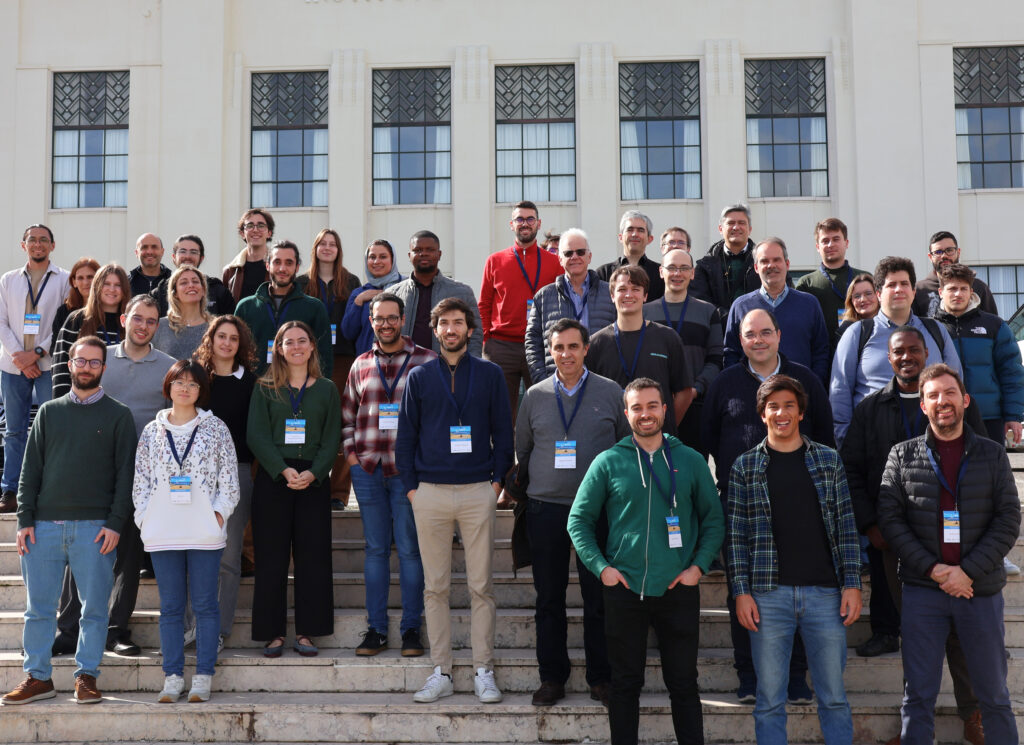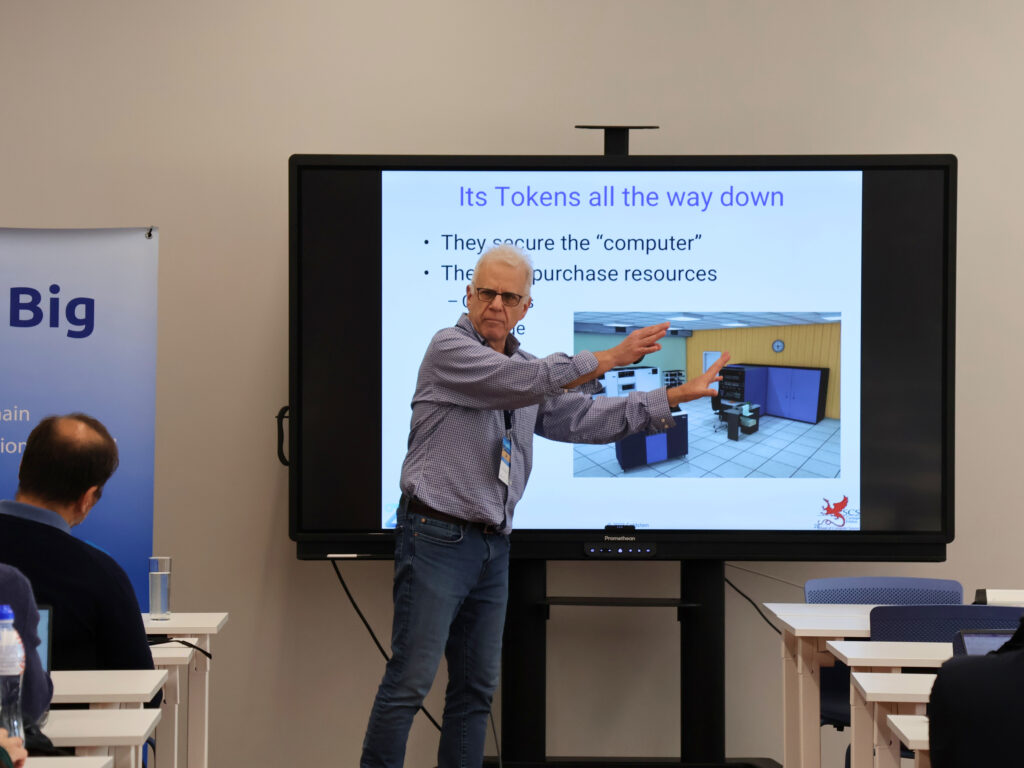
Photo Credit: INESC-ID
“What is missing in Web3 is trust.” CMU Professor, Seth Goldstein, reflects on Blockchain and the future of work
With its decentralized systems and the potential to reshape how we interact with the internet and conduct business, web3 sounds almost like an El Dorado. At the centre of it lies the technology that powers blockchain. Seth Goldstein, Professor at CMU School of Computer Science, is a committed thinker about the topic. During the Lisbon Blockchain Winter School 25, organized by the BIG Era Chair Project, he shared his mind-opening insights with the attendees, on a keynote under the title Web 3: trust, reputation and the future of money.
For the specialist, that shared the story of the three technological revolutions mankind has been through, what we are now living is unlike anything we have seen before and therefore a conversation about what is going on is crucial. “With the development of Web3, blockchain, and cryptocurrency, we are entering the third technological revolution (TR3) — one that will transform the labour market, redefine productivity, and fundamentally alter how we work.”
Web3: The technology of trust
Web3 is more than just a technological shift; it’s a new social technology that addresses trust in digital interactions. For Goldstein, the heart of blockchain’s innovation lies in the idea that, with it, you don’t have to trust the individual actors involved, but you can trust the results they produce.
In the past, trust has been central to transactions. From banking to everyday exchanges, we rely on systems and intermediaries to validate and secure transactions. Goldstein compares this to a simple example of money transfer: Imagine a world where individuals didn’t rely on intermediaries like banks but instead could exchange money directly, knowing their transactions would be validated by others in the network, who are incentivized to do so honestly.
This decentralized validation system is the backbone of blockchain. It operates without a central authority and ensures the authenticity of every transaction, allowing people to trust the results even if they don’t trust each other. As Goldstein puts it, blockchain is “a social technology” where individuals are incentivized to behave honestly, not because of goodwill, but because their economic interests are aligned with maintaining the system’s integrity.
Is Blockchain for social good?
One of the most common criticisms of blockchain and cryptocurrency is that they might be used for illicit purposes. Goldstein, however, counters that the transparency inherent in blockchain actually makes it difficult to misuse. Every Bitcoin transaction, for example, is recorded on the blockchain and publicly visible, making it clear who is transferring funds to whom. This transparency might be one of the technology’s most significant strengths in ensuring accountability and trust in the system.
Goldstein also highlights the broader social impact of these technologies. Just as roads and public infrastructure provide societal benefits, blockchain, Web3, and cryptocurrency can be seen as a public good, accessible to everyone. They allow for decentralized governance and voting, enabling individuals to participate in decision-making processes without the need for centralized power structures.
Technological revolutions and the future of work
Goldstein draws parallels between Web3 and earlier technological revolutions. The First Industrial Revolution saw a massive increase in productivity and improvements in living standards. The Second Industrial Revolution, fueled by electricity, further transformed society. However, the third revolution, which is driven by technologies like Web3, artificial intelligence, and blockchain, presents a unique challenge: it will not only increase productivity but also lead to massive disruption in the labour market.
With the rise of automation and AI, many traditional jobs are being replaced by machines. But there’s a twist: as productivity increases, labour costs are approaching zero. In Goldstein’s view, Web3 represents the solution to this problem by creating new forms of money and economic systems that don’t rely on the traditional methods of trust and control. As the cost of production continues to decrease, individuals may no longer need to depend on traditional jobs to sustain their livelihoods.
Goldstein also provocatively suggests that the key skills for the future won’t be programming or technical expertise, but rather philosophy, time management, and human-centric skills like empathy, creativity, and social intelligence. As machines take over cognitive and physical tasks, humans will be needed more for their emotional and creative capabilities.
As Web3 continues to evolve, there’s a need for regulation to ensure that it doesn’t devolve into a system ripe for exploitation. While Goldstein believes that governments shouldn’t be the ones to innovate, their role is critical in establishing boundaries and ensuring that individuals and institutions act within those boundaries. This is where the concept of Adam Smith’s “invisible hand” comes into play — government intervention should be designed to address externalities, like pollution, by setting appropriate costs and regulations.
In the case of cryptocurrency and blockchain, governments should aim to create a framework where people can innovate but also be held accountable for their actions. With the right regulations, blockchain could remain a force for good — offering transparency and security while providing individuals with the freedom to innovate.
Reputation-based currency
Looking ahead, Goldstein envisions a future where reputation is more important than currency. In this new economic model, the currency will be based not on the trust in a central authority but on the trust that people place in each other’s reputations. People will “print” their own money, and the value of that money will be determined by their fiscal reputation — not the government or central bank.
However, there are challenges ahead. As the labour market changes, Goldstein warns that the transition could be painful, with mass unemployment and social unrest as traditional jobs disappear. Yet, he remains optimistic. If we approach this revolution with the right mindset and adapt to these changes, the future could be bright — even if it requires us to rethink what work means and how we value human skills.
Goldstein’s greatest fear, however, is the potential end of innovation. With the rise of automation and AI, fewer people may choose to invest the time and effort needed to become experts in their fields. If the pursuit of expertise becomes increasingly irrelevant, we might lose the very drive that has led to humanity’s greatest advancements. This presents a paradox — we’re entering an era of unprecedented technological progress, but we also risk undermining the very factors that drive that progress.
In conclusion, the Web3 revolution is not just about blockchain or cryptocurrency — it’s about rethinking how we organize and value work, trust, and money in a world where traditional systems are no longer sufficient. While the future may be uncertain, one thing is clear: the changes happening now will define the future of work, society, and how we interact with the digital world. Whether it becomes a utopia or dystopia depends on how we navigate this new frontier.
—
Text by Sara Sá, Science Writer | Communications and Outreach Office, INESC-ID
© 2025 INESC-ID. Credit INESC-ID and the author, and link to the original source when sharing or adapting this article.
Images | © 2025 INESC-ID


